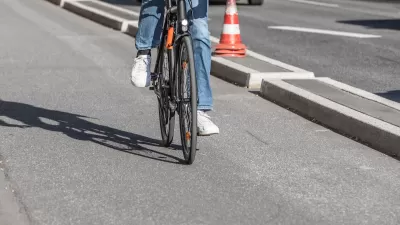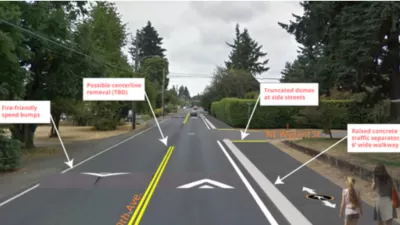Despite the high cost of car ownership, Americans walk less than almost any other nation, even for short trips that could be done on foot.

In 1797, future king of France Louis Philippe I wrote, upon visiting the newly formed United States of America, that “Americans are in the habit of never walking if they can ride.” Writing in Streetsblog, Kea Wilson reminds us that, even today, “Americans walk far less for transportation than residents of other industrialized nations.”
A study published in Sustainability reveals that “Of the 11 countries in the sample for which data was available for all trip purposes, the U.S. tied for last with notoriously car-dependent New Zealand among the populations that walk for the lowest percentage of overall trips (12 percent).” By contrast, walking made up 20 to 26 percent of trips in the U.K, France, Germany, Finland, and Norway.
“The authors of the study, though emphasize that there’s nothing that makes America an inherently pedestrian-hostile country — and that by adopting the transportation policies of our more active peer nations, we can overcome what may feel like an insurmountable collective obsession with cars.”
The study provides three key takeaways:
- It’s not just sprawl. Although Americans like to blame the country’s size and spread-out cities for a lack of walking, the study showed that Americans drive more often than their counterparts in other countries even for the shortest trips.
- Low-income Americans are often forced to walk, but also benefit from the least robust pedestrian infrastructure.
- American pedestrians are being killed at higher rates than elsewhere, and the problem is only growing.
FULL STORY: Exactly How Much Less America Walks Than Other Countries, In Five Charts

Planetizen Federal Action Tracker
A weekly monitor of how Trump’s orders and actions are impacting planners and planning in America.

Canada vs. Kamala: Whose Liberal Housing Platform Comes Out on Top?
As Canada votes for a new Prime Minister, what can America learn from the leading liberal candidate of its neighbor to the north?

The Five Most-Changed American Cities
A ranking of population change, home values, and jobs highlights the nation’s most dynamic and most stagnant regions.

San Diego Adopts First Mobility Master Plan
The plan provides a comprehensive framework for making San Diego’s transportation network more multimodal, accessible, and sustainable.

Housing, Supportive Service Providers Brace for Federal Cuts
Organizations that provide housing assistance are tightening their purse strings and making plans for maintaining operations if federal funding dries up.

Op-Ed: Why an Effective Passenger Rail Network Needs Government Involvement
An outdated rail network that privileges freight won’t be fixed by privatizing Amtrak.
Urban Design for Planners 1: Software Tools
This six-course series explores essential urban design concepts using open source software and equips planners with the tools they need to participate fully in the urban design process.
Planning for Universal Design
Learn the tools for implementing Universal Design in planning regulations.
New York City School Construction Authority
Village of Glen Ellyn
Central Transportation Planning Staff/Boston Region MPO
Institute for Housing and Urban Development Studies (IHS)
City of Grandview
Harvard GSD Executive Education
Regional Transportation Commission of Southern Nevada
Toledo-Lucas County Plan Commissions





























